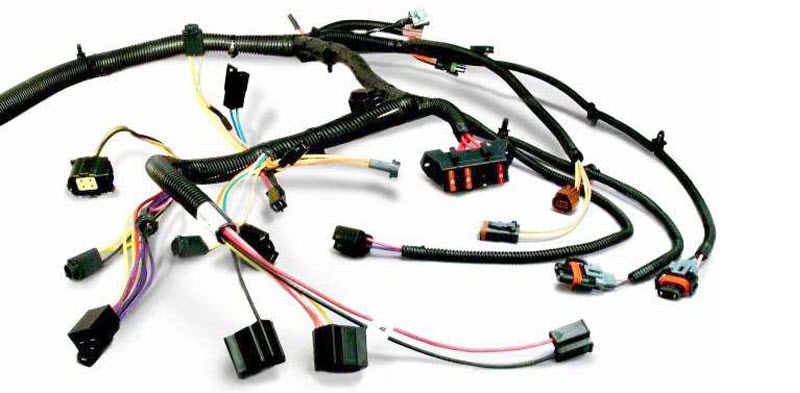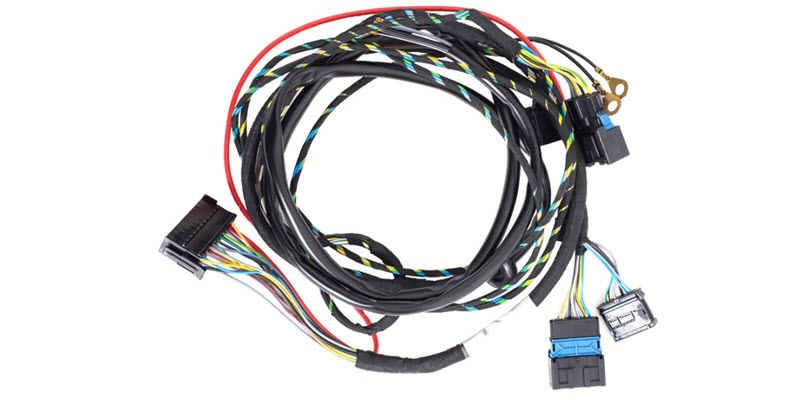Get a free quote for your project. Click here.
Kunshan Yuanhan Electronic Equipment Co., Ltd.
Kunshan Yuanhan Electronic Equipment Co., Ltd.
With the rapid development of automobile electrification, intelligence and networking, automotive wiring harnesses, as the "nervous system" of vehicles, are facing unprecedented challenges. From complex system architecture to stringent environmental requirements, the difficulty of wiring harness design, manufacturing and maintenance is constantly increasing. This article will deeply explore the main problems currently facing automotive wiring harnesses and propose corresponding innovative solutions.
The main problems faced by automotive wiring harnesses
Increased complexity
Problem description: Modern cars integrate a large number of electronic devices, such as ADAS (Advanced Driver Assistance Systems), infotainment systems, and electric powertrains, which leads to a significant increase in the length of wire harnesses and the number of nodes. For example, the length of a high-end car's wire harness may exceed 5 kilometers and contain thousands of connection points.
Challenges: Increased complexity leads to more difficult designs, limited installation space, and prone to signal interference and failure.
Weight and space restrictions
Problem description: The wiring harness is the third heaviest component in a car, second only to the engine and chassis. Too many cables not only increase the weight of the vehicle, but also take up valuable space.
Challenge: Increased weight affects fuel efficiency and driving range, while space limitations place higher demands on wiring harness layout.
Electromagnetic Interference (EMI)
Problem description: High-frequency signal transmission (such as vehicle-mounted communications and sensor data) is susceptible to electromagnetic interference, which affects system stability.
Challenge: Traditional shielding methods may not meet the anti-interference requirements in high-frequency environments.
Environmental tolerance
Problem description: Automotive wiring harnesses need to operate stably and for a long time in extreme temperature, humidity, vibration and chemical corrosion environments.
Challenge: Material aging and performance degradation may cause wiring harness failure and affect vehicle reliability.
Cost pressure
Problem Description: The complexity and high performance requirements of wiring harnesses drive up material and manufacturing costs.
Challenge: In the fiercely competitive automobile market, cost control is an important issue facing automobile companies.

Innovative solutions
Modular and Regional Architecture
Solution: Adopt modular design and zonal architecture to divide the wiring harness into multiple functional modules, reducing cable length and connection points.
Advantages: Simplify design, reduce weight, save space, and improve installation efficiency.
Lightweight materials
Solution: Use high-performance lightweight materials such as aluminum conductors, fiber-reinforced composites and ultra-thin insulation.
Benefits: Significantly reduces harness weight while maintaining electrical performance and mechanical strength.
High frequency shielding technology
Solution: Develop new shielding materials and technologies, such as multi-layer shielding structures, conductive polymers and nano-coatings.
Advantages: Effectively suppress high-frequency electromagnetic interference and ensure the stability of signal transmission.
Environmentally resistant materials and design
Solution: Use high-temperature and corrosion-resistant materials (such as silicone insulation and galvanized terminals), and optimize wiring harness layout to reduce environmental stress.
Benefits: Improve the durability and reliability of wiring harnesses in extreme environments.
Solution: Introduce automated production lines and digital design tools (such as CAD and simulation software) to optimize the manufacturing process.
Advantages: Improve production efficiency, reduce labor costs, and reduce errors.
Cost optimization strategy
Solution: Reduce material and manufacturing costs through standardized design, scaled procurement, and supply chain optimization.
Advantages: Effectively control costs while ensuring performance.

Future development trends
Wireless and Fiber Optic Technology: Reduce the use of traditional cables and transmit data through wireless communication and fiber optics, further reducing weight and complexity.
Intelligent wiring harness: integrated sensors and diagnostic functions to monitor wiring harness status in real time and achieve predictive maintenance.
Sustainable Materials: Develop recyclable and environmentally friendly materials to support the green transformation of the automotive industry.
Conclusion
As a core component of the vehicle electrical system, automotive wiring harnesses are facing multiple challenges such as complexity, weight, environment and cost. The industry can effectively deal with these problems through innovative solutions such as modular design, lightweight materials, high-frequency shielding technology, environmentally resistant design and automated manufacturing. In the future, with the continuous advancement of technology, automotive wiring harnesses will develop in a smarter, lighter and more sustainable direction, providing solid support for automotive electrification and intelligence.